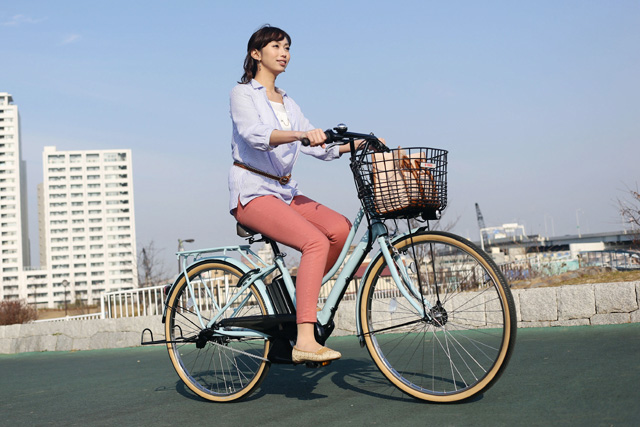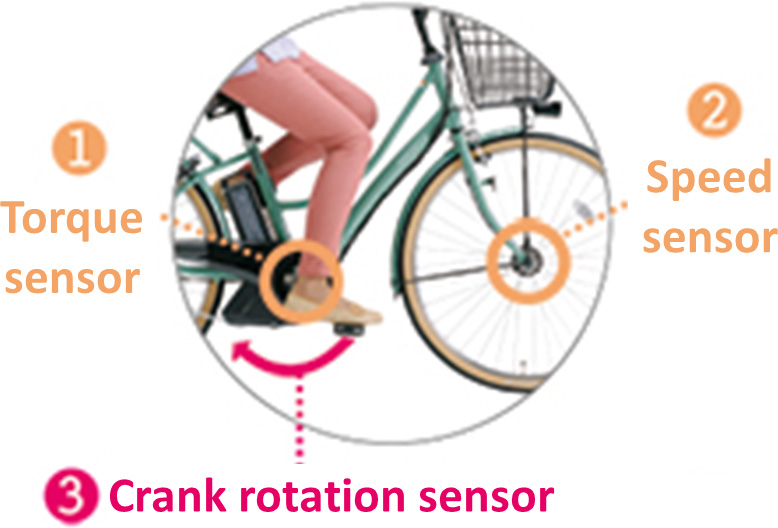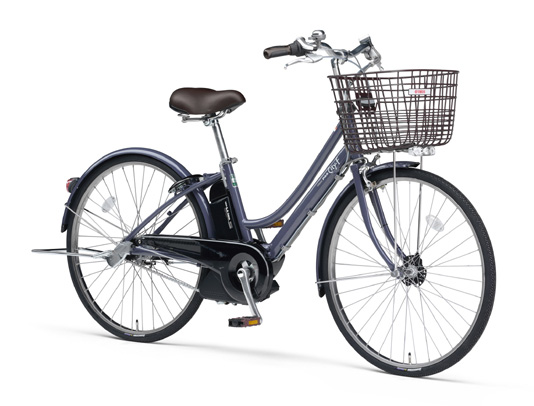The “GREEN CORE” Ideal: An Accumulation of Yamaha Know-how and Success
Introducing the stories behind Yamaha Motor's technologies.

Since the launch of the first generation of Yamaha PAS bicycles in 1993, Yamaha has manufactured and supplied more than three million (as of 2014) of the drive units that function as the heart of electrically power-assisted bicycles to brands in Japan and overseas. In Japan, these drive units are used in complete Yamaha-brand PAS bicycles, but they are also supplied on an OEM basis to manufacturers based in and outside the country. The electric motors at the core of these drive units have undergone continuous evolution to improve their basic performance and to reduce size and weight. While the first-generation units weighed around 6 kg, today’s latest drive units tip the scales at less than 4 kg. At the same time, boosting the “quality” of the electricity supplied to the units has always been one of our points of focus.
First-generation PAS bicycles used a reliable brush-type DC motor until the PAS Royal introduced in 1999 adopted an AC servomotor that made the power assist feel smoother.
Then in 2001, models with a compact motor utilizing a neodymium magnet joined the PAS lineup. This motor provided an even smoother and more linear feeling to the assist force.
Furthermore, in 2014, Yamaha introduced the “GREEN CORE” concept for compact next-generation drive units based on long years of accumulated technology and know-how. The aim of the concept is to create drive units that deliver an enjoyable ride and excellent environmental friendliness through greater compactness, lighter weight, and higher performance. The PAS Natura models released in January 2015 (#1) were the first products to feature a GREEN CORE-based drive unit. Compared to the previous version, the drive unit is about 16% smaller and around 20% lighter. It also achieves equal levels of torque output, uses far fewer rare earth metals, etc., for a smaller environmental footprint. This new drive unit has been subsequently used on other PAS models.
Non-Contact Magnetostrictive Torque Sensor for a More Enjoyable Ride
Yamaha based its approach to drive unit development on the principle of detecting the force applied by the rider to the pedals as “torque.” Using a torque sensor to detect the force applied to the pedals and a speed sensor to monitor the bicycle’s running speed, the system’s microcomputer calculates optimum assist values in real-time and sends commands to the controller unit to regulate the amount of assist force to be sent to the rear wheel.
The torque sensor used on the first-generation PAS models was a mechanical type, which meant that there was a certain level of resistance on the pedals when trying to pedal without an assist, such as when the system was turned off. To resolve this issue, a non-contact torque sensor utilizing magnetostrictive materials was adopted. The new sensor was first put to use on the “New PAS” models released from April 2003 (#2), and it reduced loss and resistance in the drive unit to give the easy pedaling feeling of a regular bicycle when the assist mode was not in use.
It was with the models released in 2013 (#3) that a new level of smoothness was achieved for the power assist. In addition to the existing torque and speed sensors, a third crank sensor that detects the rotational speed of the crank (pedals) was added to create a “Triple Sensor System.” With this, the system could detect when the rider was pedaling fast as well as when the rider suddenly stopped pedaling. Input from the Triple Sensor System enabled real-time detection of how the rider was pedaling and how the bicycle was being ridden, enabling the drive unit to select a control map based on ride conditions to provide an optimal power assist from the motor. The rest of the PAS lineup was eventually equipped with this Triple Sensor System.



S.P.E.C. for Dedicated Control Parameters for Each Gear
The available mode settings for the power assist are a major factor contributing to the ease of use customers experience with Yamaha PAS bicycles. In 1998, we introduced models featuring two ride modes: Standard and a new Economy Mode. Then in 2006, we added an “Auto-Eco Mode” that brought both a strong assist when desired and longer assisted riding distance per battery charge for a choice of three ride modes. The assist would usually be activated when the rider is pushing hard on the pedals at times like setting off from a stop or when accelerating, but when the force to the pedals lessened, the system would then automatically and smoothly turn the assist off or on again. This contributed to longer assisted riding distances per charge in accordance with riding conditions.
The next evolution in assist control came in 2008. In the previous control system, the control parameters for assist force (motor rpm) were set for running in the top gear, but this alone failed to provide effective assist performance for some types of riding styles. For example, in the case of a 3-speed model, this setting meant that when the rider downshifted from 3rd to 2nd gear, the control system would decrease the strength of the assist because of the increase in motor rpm even though the bicycle’s speed was decreasing. To make optimum use of the assist potential over the range of gear ratios, we developed the “S.P.E.C.” (Shift Position Electric Control) system to provide dedicated assist control parameters for each gear. This system was adopted first on a PAS sport model before subsequent implementation on other models.
After the government regulation for assist ratio (human power to assist power) was raised from 1:1 to 1:2 from 2009, various PAS models were fitted with the new “S.P.E.C.3” system (#4) that enabled a stronger assist at low speeds, thus taking full advantage of the new regulation. These systems made it possible to provide smooth and powerful assist performance over a wider range of gears and speeds, from starting off, acceleration and up through cruising speeds.


